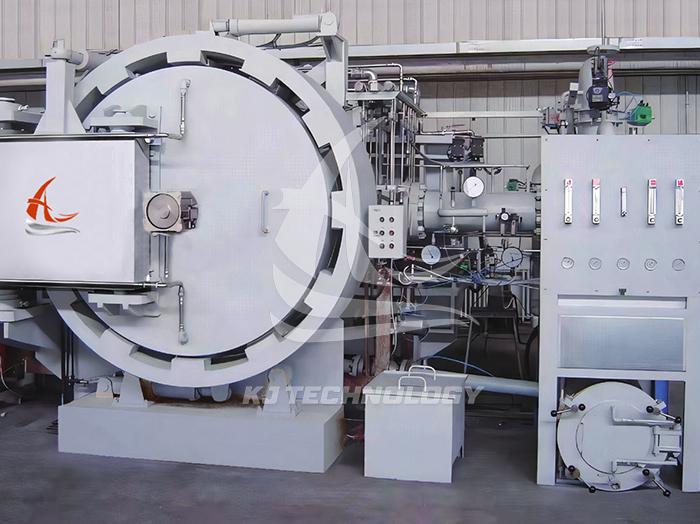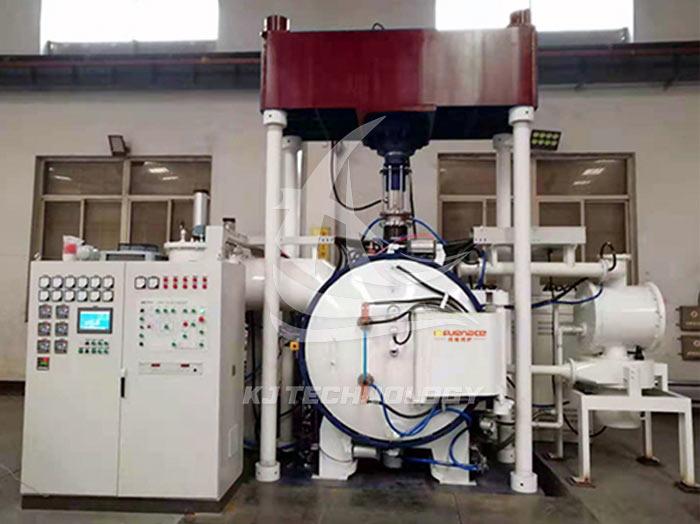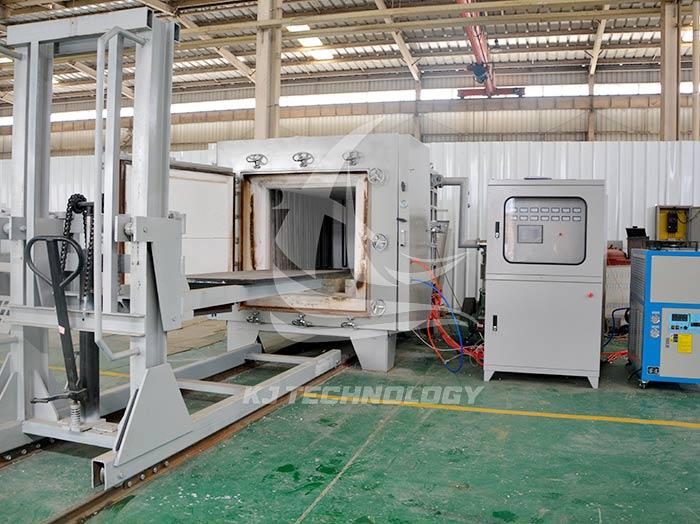The temperature of the pressure sintering furnace cannot rise
 07-09-2025 Author: KJ technology
07-09-2025 Author: KJ technology
The inability to increase the temperature of the pressure sintering furnace may be caused by faults in the power supply, heating elements, temperature control system, process settings, equipment sealing, or auxiliary systems. The following are specific reasons and solutions:
1. Power and heating element issues
Power supply not connected properly: Check the power circuit and switch to ensure normal power supply.
Heating element damage: Use a multimeter to measure the resistance of the heating element and determine if it is open or short circuited. If the heating element is damaged, it needs to be replaced in a timely manner.
2. Temperature control system issue
Temperature setting error: Check if there is a problem with the temperature setting of the temperature control system to ensure that the temperature setting value is accurate.
Unreasonable PID parameters: The PID controller is the core component of temperature control. If the parameter settings are not reasonable, it may lead to inaccurate temperature control. Recheck the temperature setting value and adjust the PID parameters according to the actual situation to make temperature control more accurate.
Temperature sensor malfunction: The temperature sensor is a critical component for monitoring the temperature inside the furnace. If the sensor is damaged or calibrated inaccurately, it can lead to temperature control failure. Check if the temperature sensor accurately monitors the temperature inside the furnace, and recalibrate the sensor if necessary.
Temperature control system malfunction: Check other components of the temperature control system, such as controllers, relays, etc., to ensure they are working properly.
3. Process setting issues
The sintering stage does not match the temperature: The sintering process is usually divided into multiple stages, such as pre sintering, dewaxing, sintering, etc., and the temperature requirements for each stage are different. If the process settings are not reasonable, it may result in the temperature not reaching the set value. Adjust process parameters based on the characteristics of sintered materials to ensure reasonable temperature settings at each stage.
Excessive furnace capacity: If the furnace capacity is too large, it may cause uneven heat transfer and affect temperature rise. Control the furnace capacity to avoid exceeding 80% of the furnace chamber volume and ensure even distribution of heat.
4. Equipment sealing issues
Poor sealing of furnace body: Poor sealing of furnace body can cause heat loss and affect temperature rise. Check whether the sealing rings at the furnace door, observation window, and pipeline connections are aging, damaged, or improperly installed. Replace the sealing rings in a timely manner and reinstall them to ensure good sealing.
Vacuum system failure: If the pressure sintering furnace is equipped with a vacuum system, vacuum system failure may also affect temperature rise. Check the vacuum pump, vacuum pipeline and other components to ensure that the vacuum system is working properly.
5. Auxiliary system issues
Abnormal cooling system: Abnormal cooling system may cause the furnace temperature to fail to rise. Check the cooling water supply to ensure that the water pump and pipes are not blocked or leaking.
Hydraulic or pneumatic system failure: For pressure sintering furnaces using hydraulic or pneumatic systems, system failure may result in insufficient pressure, which in turn can affect temperature rise. Check the supply of hydraulic oil or air pressure, repair leakage points, and ensure the normal operation of the system.








